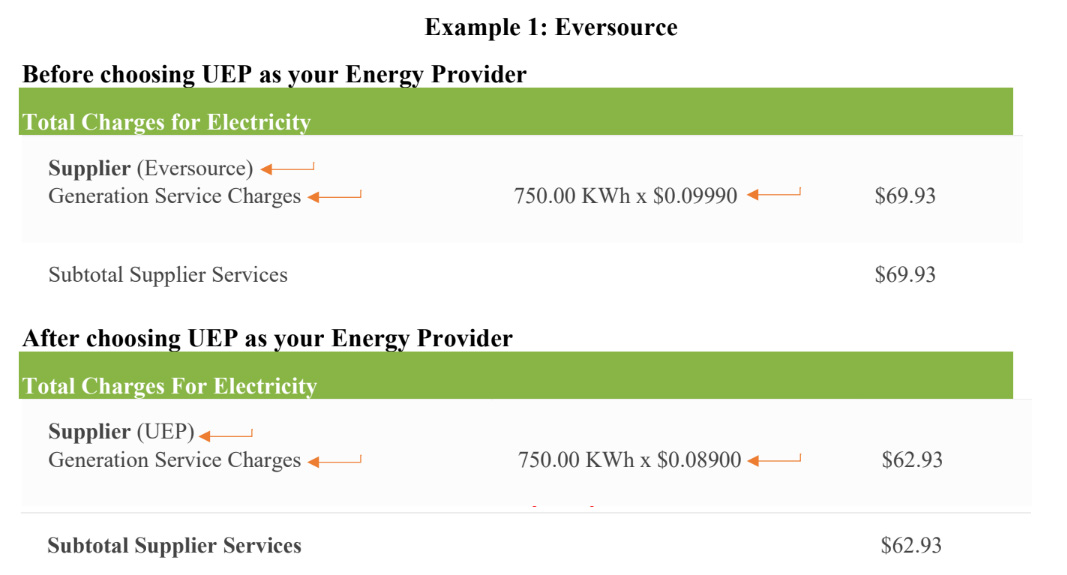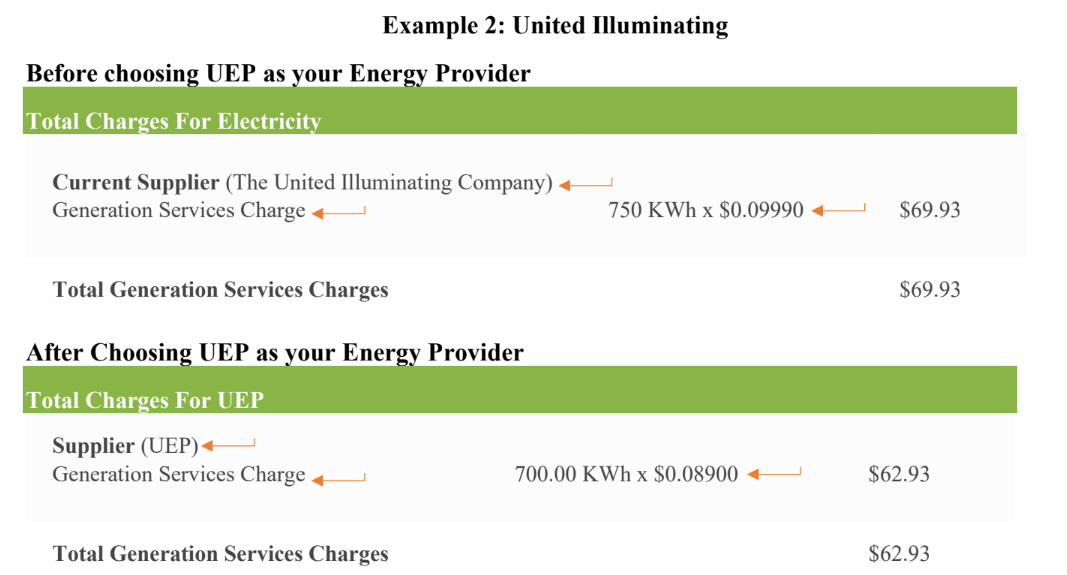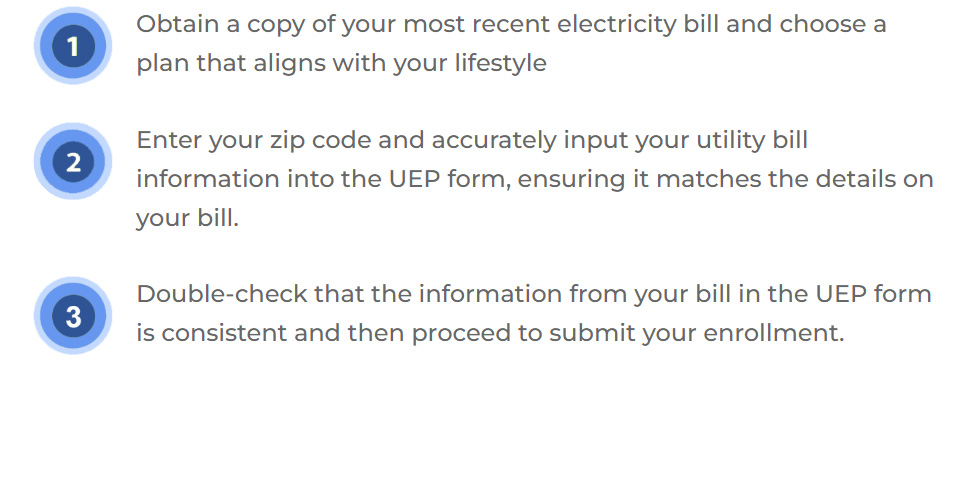

What is Energy Deregulation?
Energy deregulation lets you pick your energy provider, creating competition and the chance for lower prices, giving you more choices for your energy needs.

What is an Energy Provider?
An energy provider is a licensed company that supplies electricity and/or natural gas to your home or business, operating within regulatory guidelines.

What is
Renewable Energy?
Renewable energy is power generated from sustainable natural sources like sunlight, wind, water, and geothermal heat.
What is Renewable
Energy Credit?
Renewable Energy Credits (RECs) are certificates awarded for generating and delivering one megawatt-hour (MWh) of electricity from renewable sources to the grid.
What is a Fixed Energy Plan?
A fixed energy plan is a contract where you pay a consistent price per kilowatt-hour (kWh) for electricity generation throughout the specified term.
What is a Variable Energy Plan?
A variable energy plan is a pricing structure where the electricity rate can change based on market price fluctuations.
What is Kilowatt-Hour or KWh?
A kilowatt-hour (kWh) is how we measure electricity usage. It’s the amount of electricity you use at your place during a billing cycle. It’s shown on your bill as “kWh.
ABOUT ENROLLMENT WITH UEP
ABOUT SWITCHING TO UEP
HOW TO SWITCH TO UEP
Can I switch to service with United Energy Partners if I am on a contract with another energy company?
You can inquire about switching to United Energy Partners while under contract with another energy company by contacting your current provider to discuss contract expiration and cancellation policies.
What is the cost to switch to United Energy Partners?
United Energy Partners does not charge an enrollment fee. However, if you switch during an existing contract, your current energy provider may impose a cancellation fee. You might also encounter a one- time connection or disconnection fee from your utility or generation company, which will appear on your bill about 30 days later.
How can I become an authorized account user on a United Energy Partners account?
To gain authorization as an account user, please request the current account holder to contact United Energy Partners’ Customer Care center at 1-800-734-6570 and provide your name for account access.
When will my service with United Energy Partners begin?
Your service with United Energy Partners will commence after your local utility company conducts the next meter reading following the processing of your switch. This change will be reflected on your bill within 1 to 2 billing cycles.
Are there any fees required to sign up with United Energy Partners?
No enrollment fees are associated with selecting United Energy Partners as your electricity and/or natural gas provider.
How do I sign up with United Energy Partners?
Enrolling for a service with United Energy Partners is a straightforward process, achievable by phone or online, depending on your location within our service area. Your service will continue seamlessly without interruptions, and, in most areas of North America, you will receive your monthly bill as usual from your local utility company.
Will I save money by signing up with United Energy Partners?
Signing up with United Energy Partner may save you money, but it’s important to note that future savings are subject to commodity price fluctuations. However, historically, our rates have been competitive. Our fixed-rate products provide price stability and protection from changing energy costs. With a fixed rate, you’ll receive competitive pricing and the ability to budget your energy expenses, as your rate remains constant throughout your contract term, regardless of market fluctuations.
What happens to my service after I switch to United Energy Partners?
If you choose to switch to United Energy Partners, your local utility company will still be responsible for delivering your electricity and/or natural gas, reading your meter, sending bills, and responding to outages and emergencies. United Energy Partners’ charges will be listed as a line item on your utility bill. You can conveniently manage your United Energy Partners account and monitor your usage through our Online Account Manager (OAM).
What if I am tax exempt?
To process your tax exemption, simply fax your completed tax exemption certificate to our Customer Care Center on 1-800-734-6570 or mail a copy to the provided address.
LEARN MORE
WHICH PLAN IS FOR ME?
BENEFITS OF CHOOSING A FIXED-RATE ENERGY PLAN
When comparing fixed-rate vs. variable-rate energy plans, look at the benefits each plan can offer. For example, a fixed-rate plan has many benefits that could help keep your energy costs in check, such as: A fixed per-kilowatt-hour rate that won’t go up even if market prices rise above your rate.
- The ability to budget around your electricity costs.
- A more consistent and predictable monthly bill.
DISADVANTAGES OF CHOOSING A FIXED-RATE ENERGY PLAN
You should also consider the disadvantages of each plan when analyzing fixed-rate vs. variable-rate electricity plans. The disadvantages of fixed-rate energy plans include:
- A per-kilowatt-hour rate that will remain the same even if market prices drop below your rate.
- Possible early-cancellation fees if you decide to change plans before your contract ends.
THE BENEFITS AND DISADVANTAGES OF A VARIABLE ENERGY PLAN
You should also consider the disadvantages of each plan when analyzing fixed-rate vs. variable-rate electricity plans. The disadvantages of fixed-rate energy plans include:
- A per-kilowatt-hour rate that will remain the same even if market prices drop below your rate.
- Possible early-cancellation fees if you decide to change plans before your contract ends.
HOW DOES ENERGY DEREGULATION WORK?
BEFORE ENERGY DEREGULATION
The local utility company provided all aspects of electric service and set the rates. Consumers had no choice but to pay that rate.
WITH ENERGY DEREGULATION
Consumers can now choose a rate at their choice with a Retail Electricity Provider like UEP, creating cost-saving opportunities.
Your Utility company still handle billing, transmission, operation, and power delivery, regulated by the Public Utility Commission.
CONNECTICUT UTILITY COMPANIES
Why do the utility companies in the state of Connecticut allow me to switch to UEP?
After deregulation, utilities can no longer profit from supplying natural gas and electricity. They can still make a profit from distribution. Your choice of a third-party supplier doesn’t affect the utility’s finances, as your bill clearly separates supply and distribution charges. Many utilities offer educational programs. A competitive market promotes better services and pricing benefits.
What is the role of my local utility company?
Your local utility delivers electricity and natural gas, maintains infrastructure, handles outages, repairs, and meter readings, ensuring reliability and safety. They provide essential services, like connecting and disconnecting properties, emergency assistance, and customer support.
What is the difference between my local utility company and UEP?
United Energy Partners is a competitive provider of electricity and natural gas in deregulated areas, offering diverse rates and plans. Your local utility manages electricity transmission, meter reading, and infrastructure maintenance. In some regions, the utility may also offer its own rates and plans to customers.
What are transmission charges?
United Energy Partners is a competitive provider of electricity and natural gas in deregulated areas, offering diverse rates and plans. Your local utility manages electricity transmission, meter reading, and infrastructure maintenance. In some regions, the utility may also offer its own rates and plans to customers.
What are distribution charges?
Distribution charges are the fees your local utility company levies to deliver electricity to your location, in addition to the generation costs. Regardless of your choice of generation supplier, these fees are company.
Eversource – 1-800-286-2000
United Illuminating Company – 1-800-722-5584
BILLING
1. If I choose UEP, how would I be billed?
You will still receive your regular utility bill each billing cycle from your Utility company.
2. Where do I send my payment after I switch to UEP?
You will continue to send payment for your monthly utility bill to your local utility company in Connecticut.
3. How can I make payment arrangement for my monthly Utility bill?
Please contact your local utility to make any payment plan or arrangement.
4. What happens to my budget plan with my utility when I switch to UEP?
If you’re on a budget billing program, you’ll will continue to receive your budget billing from your utility company.
5. Will my bill look different if I choose UEP?
If you choose UEP in Connecticut, your monthly bill will still come from your utility company. It will show both UEP’s charges for electricity supply and your utility’s charges for distribution, services, and taxes. If you’re unsure about the terminology on your bill, contact your local utility for clarification.
Example: Eversource and United Illuminating are Connecticut’s two energy utilities serving consumers.


Your Utility Company
• Eversource – 1-800-286-2000
• United Illuminating Company – 1-800-722-5584
After Choosing UEP as your Energy Provider, your Utility company will continue to handle all your services.
MANAGING YOUR ACCOUNT
How do login into my online account?
Upon completion of your enrollment, an automatic username and password should have been sent to your email.
When you login to your dashboard, you have the option to change your password.
1. If you did not receive an automatic username and password after your enrollment with UEP. Please go to Login and click on I forgot my username or password to retrieve your account information based on the email you provided during your enrollment.
2. If you are still unable to login to your account. Please go to login and click on the Register button. You will need your zip code, local utility name, account number and email address to register.
Historical Usage Data
Login to view a summary of your historical usage data with UEP retrieve from your utility company.
Account Overview
Login to view a summary of your enrollment with UEP.
View Generation Charges
Login to view a summary of your monthly generation charges.
UEP Energy Rewards
Login to your dashboard to manage your energy rewards.
Usage History
View and compare your energy usage from month to month to find ways to possibly reduce it.
OUTAGES, RECONNECTIONS AND DISCONNECTIONS
How do I report a power outage?
To report a power outage in Connecticut, please contact your local utility company.
How do I get my electricity reconnected after a disconnection?
To report a reconnection in Connecticut, please contact your local utility company.
• Eversource – 1-800-286-2000
• United Illuminating Company – 1-800-722-5584

INNOVATIVE ENERGY SOLUTIONS
Choice
Deregulation empowers energy users to select their energy source, determine how their electricity is produced, and opt for plans that align with their specific needs.
Best Practices
Deregulation empowers end-users to enhance energy efficiency by selecting companies that adopt the best energy-efficient practices.
Be Mindful
Energy deregulation encourages end-users to become cost-conscious and mindful of their energy consumption while promoting environmental awareness.
Energy Programs
Competitive energy suppliers frequently expand their energy product offerings, providing additional services and benefits to end-users that might not have been available otherwise.
COST THAT IMPACT ELECTRICITY PRICES
Electricity prices are affected by the increased expenses of electricity transmission and distribution required to meet rising demand. We all share these costs through our electricity bills, stemming from investments in
enhancing the transmission and distribution components of the regulated tariff.
Renewables and Carbon Costs
In the near future, the generation cost within the tariff is projected to increase as electricity retailers acquire more power from renewable sources such as wind, geothermal, and solar. Although these sources have low fuel
expenses, their capital and maintenance costs are presently higher than those of traditional generation sources.
Major Storm Damage
Severe weather events have had a significant impact on our electricity system. The substantial expenses related to repairing and restoring power to areas affected by natural disasters contribute to the increase in the transmission
and distribution components of the regulated tariff.
Fuel Sources
The rising cost of fuels like coal, gas, and diesel, which are used for electricity generation, has led to an increase in the generation cost within the regulated tariff. These escalating fuel expenses result in higher regulated tariffs and ultimately affect the price of electricity for consumers. Additionally, the anticipated implementation of a national scheme aimed at reducing greenhouse gas emissions will further elevate the costs associated with electricity produced by fossil-fired power stations, including coal and gas.
HOW DOES RENEWABLE ENERGY WORK
Renewable energy harnesses natural resources that continuously renew themselves. These resources, like sunlight, tides, wind, rain, waves, and thermal and biomass energy, exist in abundance across various locations. They are essentially inexhaustible and have the significant advantage of causing minimal to no harm to the environment or climate.
For instance, solar energy, which captures sunlight, generates power and heat without producing air pollution. Wind energy, also pollution-free, has become one of the world’s fastest growing energy sources and is the largest renewable energy source in the United States. Hydropower, derived from the energy of water, has been used for generations, ranging from large facilities harnessing entire rivers to smaller municipal water-based installations.
WHY SWITCH TO GREENER ALTERNATIVES
In the present day, the majority of our energy stems from non-renewable fossil fuels such as coal, oil, and natural gas. Unlike renewable energy sources, fossil fuels are finite resources that will eventually be depleted as we continue to extract them. They are also the primary culprits behind the most severe consequences of climate change and the leading cause of air pollution.
Opting for a green energy supply means replacing fossil fuels with renewable energy sources, which offer a superior and more sustainable energy choice. Since renewable energy is abundant and accessible everywhere, transitioning to this eco-friendly alternative diminishes our reliance on fossil fuels. Furthermore, by adopting clean energy, you contribute to addressing not only climate change but also air pollution. The World Health Organization (WHO) highlights that 99% of the global population currently breathes air exceeding air quality standards. There’s no better time to make the switch to green energy.
Renewable Energy Credits (RECs) serve as a means to symbolize your investment in clean, renewable energy. It’s essential to understand that purchasing RECs differs from buying electricity, settling your power bill, or investing in clean technology startups. RECs don’t function like stocks or bonds, although marketers or brokers might sometimes misrepresent them this way.
RENEWAL ENERGY CREDIT
Renewable Energy Credits (RECs) serve as a means to symbolize your investment in clean, renewable energy. It’s essential to understand that purchasing RECs differs from buying electricity, settling your power bill, or investing in clean technology startups. RECs don’t function like stocks or bonds, although marketers or brokers might sometimes misrepresent them this way.
Instead, RECs enable individuals and organizations to demonstrate their commitment to clean energy, even when installing solar panels or wind turbines is not feasible. They hold significant value for U.S. government contractors and subcontractors, helping them showcase their dedication to compete for contracts. These certificates validate the generation of one megawatt-hour (MWh) of electricity by an eligible individual generator, which is then integrated into the grid. To put it in perspective, one MWh equals 1,000 kilowatt-hours (KWh), a bit more than the typical monthly electricity usage of an average American family during a standard, non-pandemic year. Each REC is assigned a unique ID number to prevent double counting, making it compatible with distributed ledger technology like blockchain. The green energy is contributed to the grid, and the corresponding REC can be traded on the open market. “Retirement” occurs when the owner uses a REC, indicating its commitment to clean energy.
RECs have various uses, including (but not limited to):
1. Compliance with Statutory or Regulatory Requirements: End users, generators, or utility companies can use RECs to meet statutory or regulatory mandates related to renewable energy usage.
2. Public Claim: Customers can make a public statement or claim about their commitment to clean energy by associating their purchase of RECs with their energy consumption.
3. Sale of Component Attributes: The individual attributes of a REC can be sold for various purposes, offering flexibility in how the environmental and renewable energy aspects are leveraged.
Buying RECs
Any organization, corporation, non-profit, or individual interested in reducing their carbon footprint can purchase RECs. The cost of RECs can vary based on your state’s market conditions, and you may discover more favorable investment opportunities in other states.
Compliance and Non-Compliance States
In compliance states, electric companies are required by state regulations or Renewable Portfolio Standards (RPS) to generate a specific percentage of their electricity from renewable sources. If they fail to generate enough Renewable Energy Credits (RECs) through renewable energy production, they must purchase RECs to meet the mandated requirements.











